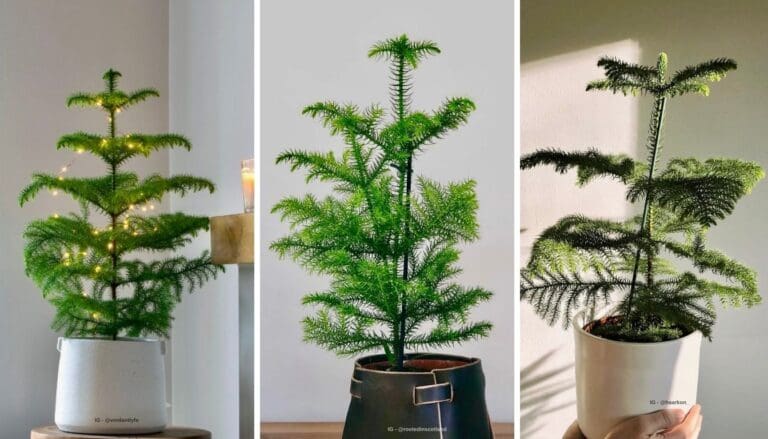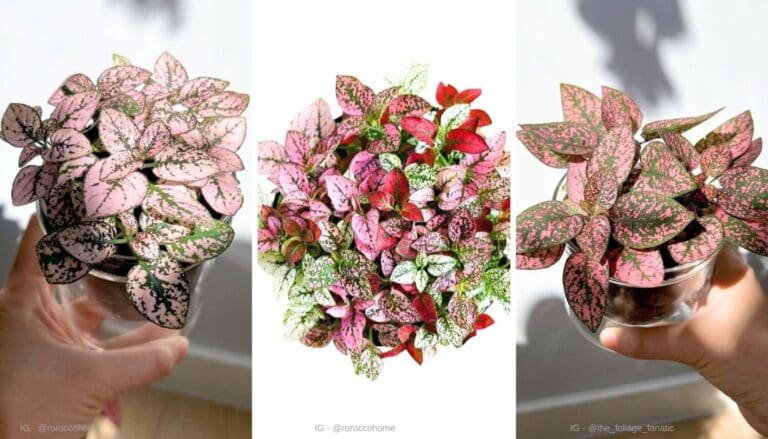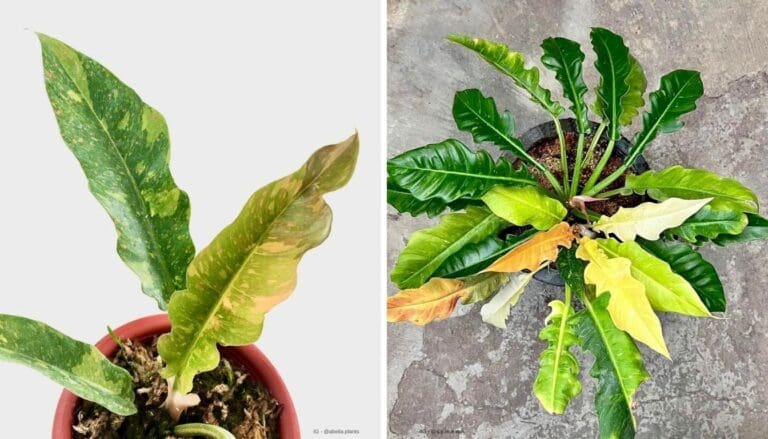Mold on Houseplant Soil: Causes & Easy Fixes
Mold on houseplant soil can be a bit of a bummer, right? If you’ve ever spotted fuzzy white or yellow stuff growing on your plant’s soil, don’t worry—mold is common and usually easy to fix.
Mold can appear due to overly moist soil or poor ventilation around your plants.
Have you ever wondered why your plants might be growing mold, even when you’re doing everything right?
The good news is that removing mold is pretty straightforward. Scraping off the moldy soil and providing better air circulation can do wonders.
You might also want to check if your soil is draining well and consider repotting your plants in fresh, sterile soil. 🌱✨ Healthy soil equals happy plants!
Let’s dive in and explore some simple and effective solutions.
Have you noticed any stubborn mold on your houseplants? Share your tips and experiences in the comments below! Let’s make our indoor gardens mold-free and thriving together! 🌿😊
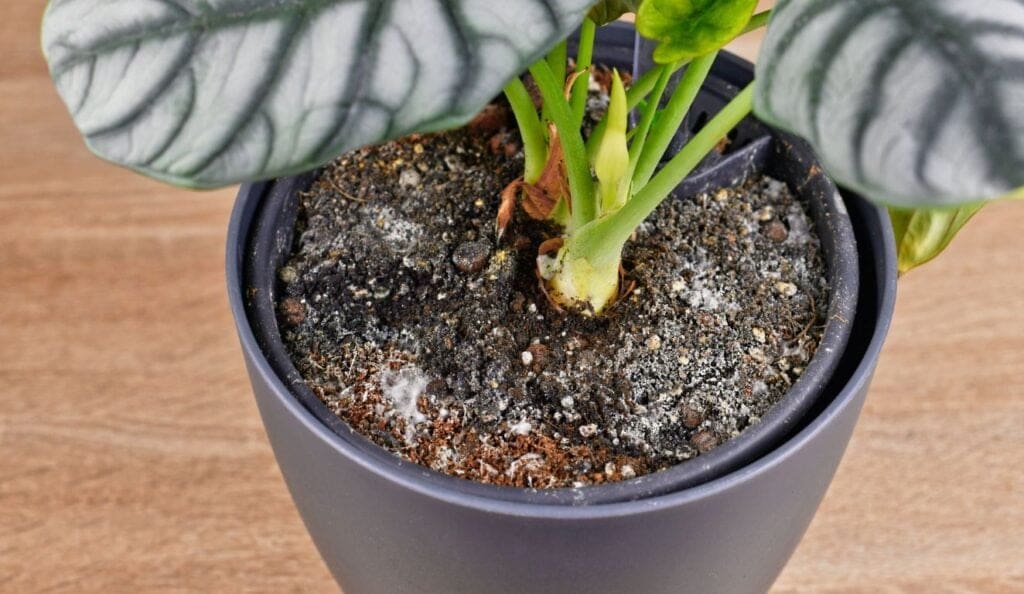
Please note: Simplify Plants is reader-supported. As an Amazon Associate, I earn from qualifying purchases made by our readers with no extra cost added to you all! Some links in the post are affiliate links and I get a commission from purchases made through links in the post.
Identifying Mold on Houseplant Soil
Ever spot something fuzzy or white on your plant’s soil and think, “What is that?” That’s mold! Here’s how to identify it:
First, take a close look at the soil. Houseplant mold often looks like white, fuzzy patches, but it can also appear gray or green.
Does it smell? Mold can give off a musty odor. So, if you’re sniffing something strange, that might be a sign too!
One tip: Use a small light to help spot any unusual growths on the soil.
Feeling worried? No need! Mold on soil is a common issue and usually not dangerous to your plants or you. But it’s best to deal with it quickly.
Have you ever found mold on your plants? Share your funny or crazy mold stories in the comments below! Let’s help each other out. 💬
Remember, identifying mold early means you can take action fast!✨
Causes of Mold Growth
Mold on houseplant soil is usually due to a few common issues. By addressing these, you can prevent mold and keep your plants healthy. Let’s dive into the specifics.
Overwatering
One of the biggest culprits is overwatering. When I give my plants too much water, the soil stays damp, which makes it a perfect place for mold to grow.
Plants don’t like to have their roots sitting in water, and neither does healthy soil.
If you notice mold, cutting back on how often you water your plants might help. 🪴 Remember, it’s better to underwater a bit than to drown your plants.
Poor Drainage
Another key factor is poor drainage. If water doesn’t drain well from the pot, the soil will stay wet for too long.
This happens if the pot doesn’t have drainage holes or if they’re blocked.
I often use pots with multiple drainage holes and a layer of gravel at the bottom. This helps the excess water escape, keeping the soil from getting soggy. Have you checked your pot lately?
Lack of Air Circulation
A lack of air circulation can also lead to mold problems. Stagnant air keeps the soil and plant too moist, giving mold a perfect environment to thrive.
I like to place my plants where they can get a gentle breeze. This might be near a window or using a small fan. Do your plants get enough airflow? Give it a try; they’ll thank you!
Contaminated Soil or Pot
Contaminated soil or a dirty pot can also introduce mold to your houseplants.
Sometimes the mold spores are already in the soil when you buy it or the pot wasn’t cleaned before being reused.
To avoid this, I always use fresh, sterile potting soil and make sure to clean pots thoroughly before planting. A little prevention goes a long way!
Feel free to share your mold-busting tips in the comments below! 🌱✨
Effects of Mold on Houseplants

Let’s chat about mold on houseplant soil and how it affects our leafy friends.
First off, mold can hinder a plant’s growth. It competes with the plant for water and nutrients, which can slow down growth or make the plant look sickly. Nobody wants a droopy plant, right?
Root damage is another biggie. Mold often means that the soil is too wet. Over time, this can lead to root rot, where the plant’s roots start to decay. If you’ve noticed your plant looking sad recently, this could be why.
Mold can also be unsightly. Let’s be honest, nobody likes seeing fuzzy white or green stuff on their soil. It’s like a bad haircut for your plant! Plus, it can make your room look less neat and tidy.
Allergies—both for you and your plant. Yes, plants can have a hard time dealing with mold, but so can people.
If you’re allergic to mold, having it in your home can be a real nuisance.
Think about it: Have you ever spotted mold on your plants and felt like your nose couldn’t stop itching? 🤧 Mold spores can spread through the air, potentially causing respiratory issues.
To keep your plants happy and healthy, it’s crucial to tackle mold as soon as you see it. Share your mold-busting tips in the comments below! How do you keep your plant babies mold-free?
Stay green, friends! 🌱
Prevention Strategies
Keeping mold at bay on houseplant soil can be easy with a few smart steps. Focus on proper watering, choosing the right soil and pot, and maintaining a good environment for your plants.
Proper Watering Techniques
Overwatering is one of the most common causes of mold on houseplant soil.
Always check the moisture level of the soil before watering. Stick your finger about an inch into the soil; if it’s still moist, skip watering.
Use a watering schedule that suits your plant’s specific needs, and water less frequently to prevent soggy soil.
Ensure that the pot has drainage holes to allow excess water to escape. Also, always empty the saucer under the pot after watering to prevent water from sitting and creating a damp environment.
Has this ever happened to you? You dump too much water, and the plant looks like it’s at a pool party? 🌊 Well, it’s time to change that!
Soil and Pot Selection
Choosing the right soil and pot can significantly impact mold prevention.
Use a well-draining soil mix that contains materials like perlite or sand. These materials help improve aeration and drainage, preventing water from sitting too long in the soil.
Select a pot that is the appropriate size for your plant.
Plants in overly large pots tend to retain more water than necessary, leading to mold.
Make sure your pot has adequate drainage holes. Without these, your plant’s roots can become waterlogged, encouraging mold growth.
Ever notice how some pots look like they hold a gallon of water? 🚰 Yeah, avoid those!
Environmental Control
Light and air circulation play a big role in preventing mold.
Place your plants in a spot where they get the right amount of sunlight. Most houseplants thrive with indirect light, but too much shade can lead to mold.
Ensure there’s proper airflow around your plants.
This can be achieved by not crowding them together and occasionally running a fan in the room.
Mold loves still, humid air, so keeping the environment fresh and breezy helps keep mold away.
Have you ever let your plant soak up the sun by the window? 🌞 It’s like giving them a day at the spa!
Have any tips or tricks for keeping mold off your houseplants? Share your thoughts in the comments! 😊
Treatment Options

When it comes to mold on houseplant soil, there are several ways to tackle it. Some methods use natural ingredients, others rely on chemical treatments, and sometimes, simply removing the affected soil does the trick. Let’s dive in!
Natural Remedies
Neem Oil: I love using neem oil because it’s a natural way to handle mold.
Mix 2 teaspoons of neem oil, 1 teaspoon of dish soap, and half a gallon of water.
Water your plant with this mix and let the soil dry before you water again.
Vinegar Spray: Another good method is making a vinegar spray.
Combine a gallon of water with 3 tablespoons of apple cider vinegar.
Spray this solution on the moldy soil every four to five days until the mold is gone. It’s simple and effective.
Improving Drainage: Mold often grows in damp soil.
Mix some perlite, sand, or vermiculite into the potting mix to help with drainage. This keeps the soil from staying too wet and prevents mold from coming back.
Got any other natural tips? Share them in the comments!
Chemical Treatments
Fungicides: Sometimes, a chemical approach is necessary.
Fungicides can be very effective. You can find them at most garden centers.
Follow the instructions on the label carefully to avoid harming your plants.
Hydrogen Peroxide: Another option is to use hydrogen peroxide.
Mix one part 3% hydrogen peroxide with four parts water.
Water your plant with this solution to kill mold spores. Just be sure to let the soil dry out afterward.
Using chemicals might feel a bit intimidating, but they can be really powerful tools to keep your houseplants healthy and happy. What do you think about using chemicals for mold — handy or scary?
Removing Affected Soil
Scrape Off Mold: If the mold is just on the surface, scrape off the affected soil with a spoon or small trowel. Be careful not to damage the plant roots.
Repotting: If the mold is more extensive, it might be best to repot the plant.
Remove the plant, gently shake off as much old soil as possible, and replant it in fresh, clean potting mix. This ensures the new soil isn’t contaminated.
Top Dressing: Sometimes, adding a layer of fertile soil or mulch on top of existing soil can help.
It prevents mold spores from accessing light, which they need to grow.
Anyone had success with these methods? Let me know in the comments! 🎋
Monitoring and Maintenance
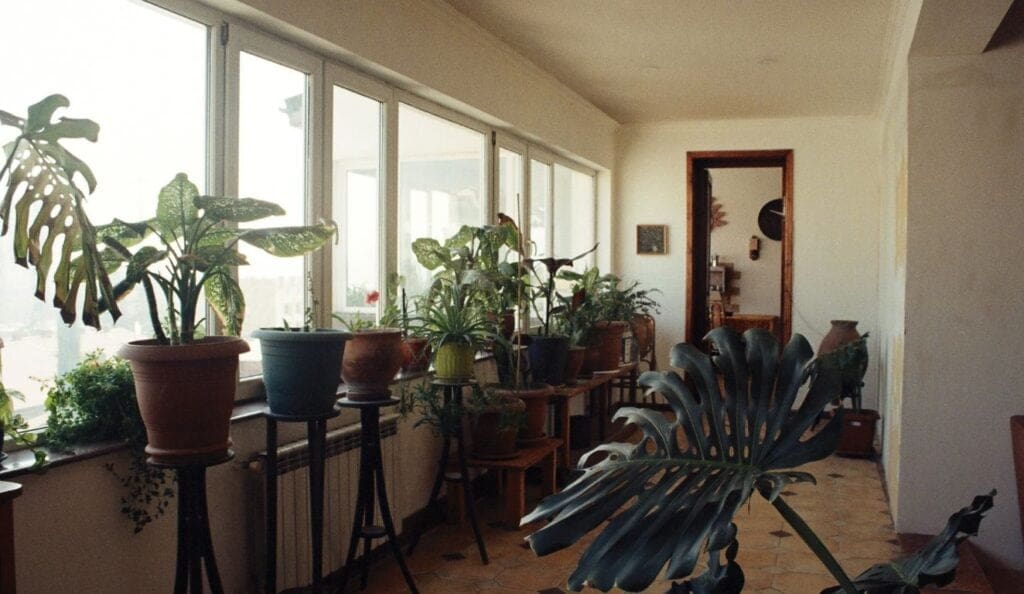
Keeping an eye on your houseplant soil is key to preventing mold ✨.
I make it a habit to check the soil’s moisture level every few days.
Simple, right? Just poke your finger about an inch deep into the soil. If it feels damp, hold off on watering 🌿.
Adequate sunlight can make a big difference.
I ensure my plants get plenty of natural light.
No bright spot? Use a grow light!
Ever seen plants sunbathing? It’s quite something! 😎
To keep things tidy, I use a small table or chart to note down my watering schedule for each plant.
It’s super helpful, especially if you have multiple leafy friends like me 🌱. Example:
| Plant Name | Last Watered | Next Check |
|---|---|---|
| Spider Plant | May 28 | June 1 |
| Peace Lily | May 27 | May 30 |
Drainage is crucial.
I always make sure my pots have drainage holes to let out excess water.
Clogged holes? No problem! Just poke them clean with a stick or a chopstick 🥢.
A fun trick I use is the apple cider vinegar spray.
Mix a gallon of water and 3 tablespoons of apple cider vinegar.
Spray it on the soil every few days till the mold is gone. Works like magic ✨.
How do you manage your plants? Have any tips or funny stories? Share below! Let’s swap gardening tales 🌿😊.
FAQs
Why is there mold on my houseplant soil?
Mold on your houseplant soil usually happens because of too much moisture. 💧
This can be due to overwatering, poor drainage, or excess humidity. It’s a common issue, so don’t panic!
Is mold harmful to my plants?
A little surface mold typically isn’t harmful to your plants.
That said, ignoring it might lead to root rot, which can damage or kill your plant.
How do I get rid of mold on my houseplant soil?
You can scrape off the mold and dispose of it.
Another method is to water your plant with a neem oil solution or a baking soda mixture.
Both work well to fight mold. Try a small amount first to make sure the solution isn’t too strong for your plant.
What are some natural remedies for mold on plant soil?
A cinnamon sprinkle or a baking soda and water mix can do wonders.
Cinnamon is a natural antifungal that can help stop mold growth. Give it a try and see how your plant reacts. 🌿
How can I prevent mold from growing on my houseplant soil?
Proper drainage is key!
Use a well-draining soil mix, ensure your pots have drainage holes, and avoid overwatering.
Let your soil dry out a bit between waterings. Keeping your plants in a bright spot also helps.
Can I use household items to treat mold on my houseplants?
Yes! Products like cinnamon, baking soda, and even some dish soap can be used to fight mold.
Just be sure to test any remedy on a small area to ensure it’s safe for your plant. 🪴
Conclusion
Dealing with mold on houseplant soil is no fun, but it’s manageable! The key is to identify the mold early and take action right away.
First, I always scrape off any visible mold using a spoon or putty knife. This helps get rid of the bulk of it quickly.
Next, I make sure to improve the soil drainage. Adding materials like perlite or sand can work wonders. 🌿
Watering habits are crucial too. I let the soil dry out between waterings to avoid the damp conditions mold loves.
Using neem oil has worked well for me. I mix it with water and dish soap, then thoroughly water the plant with this solution.
Lastly, sometimes I even use a fungicide if mold keeps coming back. This helps tackle stubborn fungi.
Anyone else dealt with mold on their plants? Drop your tips below! Let’s help each other out. 🚀✨
Note: Some images in the articles are sourced from Reddit and Other Platforms For Reference Purpose.


